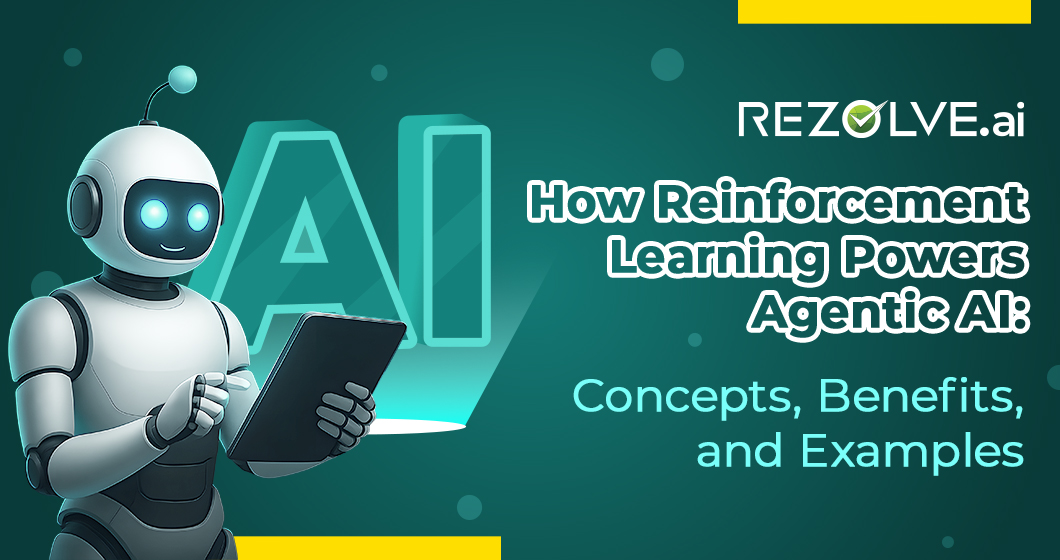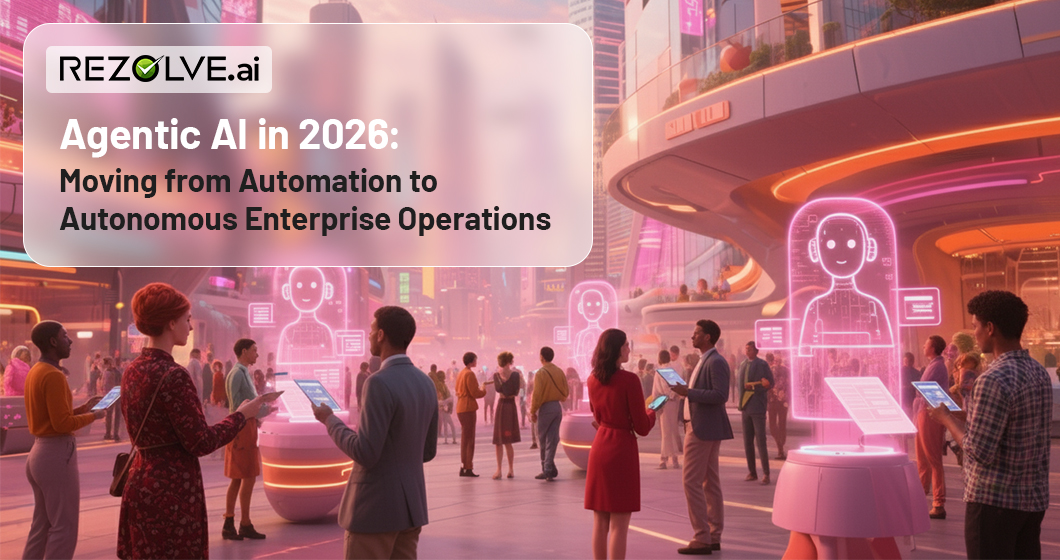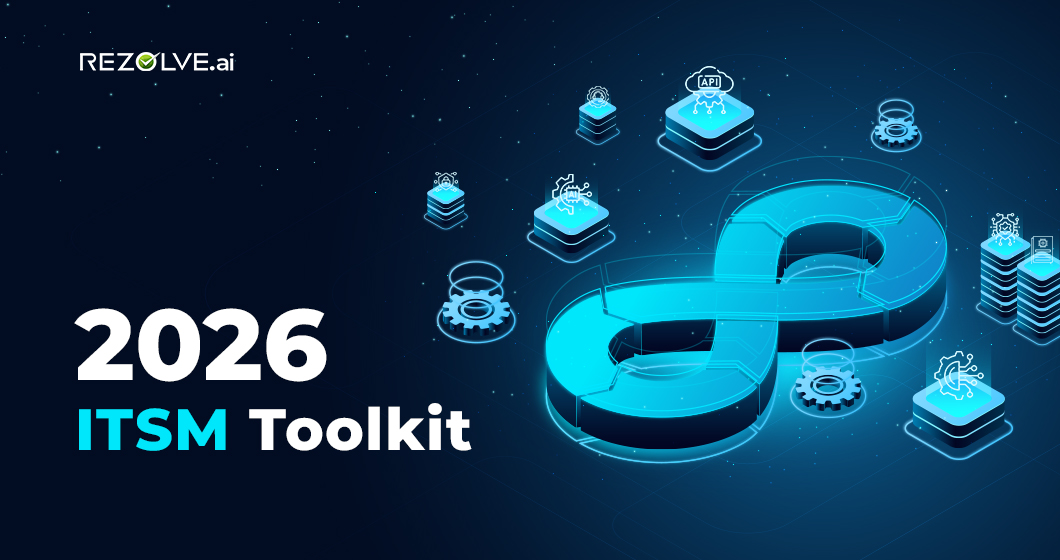There’s been a lot of talk lately about AI systems that don’t just respond to prompts but can carry out tasks on their own, step-by-step. You tell them the goal, and they figure out the rest. This emerging category of AI, i.e. Agentic AI, is getting more effective and smarter day-by-day.
But here’s something that’s not talked about enough. Most of what makes agentic behavior possible comes from a powerful idea in machine learning, that is Reinforcement Learning.
Reinforcement Learning is the backbone behind how AI systems (particularly agentic ones) learn to make decisions over time, how they improve through experience, and how they know when they’re doing something useful to achieve a given goal.
Let’s break it down in simple terms - what reinforcement learning is and how it powers agentic AI.
Let's get going!
What is Reinforcement Learning?
.png)
At its core, reinforcement learning (RL) is a way to train machines to learn by doing. Not from examples, or just instructions/scripts. Reinforcement Learning is achieved by interacting with a system, getting feedback, and figuring out what works over time.
Think of how a pet dog learns to sit. You say “sit,” they try something, and if it’s close to what you want, they get a treat. If it’s not, they don’t. Eventually, they figure out what “sit” means by trying, failing, and learning from the outcome. Every time they do something which is closer to the goal, the action is positively reinforced with a treat. If they are not, it is met with an absence of the treat or negative reinforcement/feedback. That is reinforcement learning for agentic AI in a nutshell.
In the machine world, the setup usually looks like this:
- You’ve got an agent which is a system that makes decisions.
- It operates inside an environment which is a space with some rules and things it can interact with.
- The agent observes the state of that environment and picks an appropriate action. It receives a reward (positive or negative) depending on what happens next.
The goal of the agent here is to learn which actions lead to good outcomes and replicate more of those consistently.
Why Reinforcement Learning Matters for Agentic AI?
Here’s where it gets interesting. Agentic AI systems aren’t like typical AI chatbots. You don’t just give them a single prompt and get a single answer. You give them a goal, and they need to figure out how to reach it. That means breaking it into smaller steps, making choices, handling unexpected situations, and adjusting along the way.
That’s not easy. Static models, no matter how powerful, aren’t designed to do that. They need guidance and feedback to assess if the output is close to the user’s goal. They need a loop that lets them say, “Okay, that worked… let me do more of that,” or “That didn’t go well, let’s change course.”
This is exactly what reinforcement learning is built for.
Without RL, your agent doesn’t really learn. It just follows instructions and hopes for the best. With RL, it starts to recognize patterns in what works, and it begins to choose smarter actions next time.
Where Does Reinforcement Learning Show Up in Real Work?
.png)
Let’s walk through some actual situations where reinforcement learning shows up in systems that teams are using or experimenting with today.
Handling Multi-Step Processes
Say you’ve built an AI assistant to help new employees get set up. The agent needs to gather documents, schedule meetings, request hardware, activate accounts, etc. Each task depends on the previous one. And maybe something breaks halfway through like IT approval gets delayed, or a form is missing. A simple script fails here because it wasn’t built for surprises.
But if you’ve built that system using reinforcement learning principles, the agent can;
- try different paths
- track which steps succeed most often
- learn which order of actions tends to work best.
Over time, it gets faster and smoother at its job just like a human would.
Navigating Interfaces Without an API
Here’s another example. Think of an AI agent that needs to pull data from a legacy web app. Suppose this app doesn’t have an API. The AI has to navigate the interface like a person - click this, scroll there, extract text, move to the next page, and so on. That’s messy. The UI might change slightly, buttons might move, and the structure could vary for every user.
With RL, the agent doesn’t need hard coded instructions for every page. It learns by interacting. It does so by trying one sequence of clicks, seeing if it gets the right data, and adjusting the next time if it fails. Over a few hundred runs or iterations, it gets pretty good at this kind of interface surfing.
Learning from Human Preferences
There’s also a more subtle but important use case: learning what people actually want.
Say your AI assistant writes summaries. You tweak its output to make it more concise, change the tone, and reorder the points. If your system is built with reinforcement learning from human feedback (RLHF), it can start noticing these edits. It will adapt and the next time, it will match your writing style more closely.
How Is RL Built into Agentic AI Systems?
Agentic AI doesn’t always run pure reinforcement learning in real time. In fact, doing that live is often risky and inefficient. So, here’s how it usually works behind the scenes.
Offline Reinforcement Learning
Instead of training on the fly, developers collect logs of past agent behavior. This may include what steps it took, what outcomes it got, etc. And, then train the model to learn from that history. It’s safer, and it works well when you’ve already got a ton of examples of what “good” looks like.
RL from Human Feedback (RLHF)
This is what helped models like ChatGPT become more aligned with human expectations. People rate the model’s outputs. Those scores become signals for the GPT. The model then learns to prefer responses that humans like.
This principle is applied to the agentic AI systems as well. End users rate their full performance, not just one output. Did the agent finish the task? Was it efficient? Did it avoid mistakes? That becomes training data for smarter behavior.
Simulated Environments
In some cases, especially agents operating in physical or high-stakes environments, training happens in a simulated world or sandbox environment. Agents learn there first, then move to the real world once their behavior is safe and stable.
Where Reinforcement Learning Struggles?
As helpful as it is, reinforcement learning comes with its own set of challenges. It’s important to know what those are if you're planning to use it for a custom agentic AI system.
Sparse Rewards
One of the trickiest problems in RL is that feedback isn’t always immediate. Let’s say an agent is generating a legal summary. It won’t know if it succeeded until someone reviews the full report. That could be 20 steps after the first decision. Figuring out which earlier action caused the failure or success isn’t easy. That’s called the ’credit assignment problem’ and it’s still being actively researched.
Safety and Guardrails
You can’t let an RL agent try about anything for the sake of learning and decision-making. In some systems, a bad move might mean a broken workflow, a wrong email, or something else. That’s why most agentic AI systems using RL are heavily sand boxed or only allowed to act in safe environments. Here, designing smart boundaries and fallback options becomes crucial.
Exploration vs. Exploitation
Agents need to explore new strategies to improve their decision-making and outputs. But too much exploration may also lead to erratic behavior. Too little of it, and they can stagnate. Finding the balance, when to try new things vs. when to stick with what’s known, is part science and part trial-&-error.
A Note on Language Models and RL
.png)
One of the more exciting things happening now is how reinforcement learning is being used with large language models. On their own, LLMs are incredibly good at generating ideas and reasoning through tasks. But they don’t have memory or strategy.
When you wrap an LLM inside an agent, and train that agent using reinforcement learning, you get something more powerful. A system that not only knows what to do, but learns how to do it better the next time.
This combo of LLMs and Reinforcement Learning lets agents plan, act, revise, and adapt. And it’s already powering things like:
- Document review bots that get better over time.
- Research agents that refine their search behavior.
- Writing tools that learn your tone and style from corrections.
RL and Evolution of AI
Reinforcement learning probably won’t be visible to most users. But it’ll quietly shape how agentic AI evolves in the background.
As systems get more complex to handle longer tasks, more variation, and fuzzier goals, engineers and developers will rely more on feedback-driven learning. Hard coding every decision path just doesn’t scale. But giving agents a way to learn the best paths over time is clearly scalable.
You can expect to see more products with agents that improve with their use. Not just because of better models, but because of smarter learning mechanisms under the hood.
RL won’t solve everything. But it gives agentic AI something crucial, i.e. the ability to try, fail, and adjust, like humans do.
Closing Note
Agentic AI is about more than automation. It’s about systems that can handle goals, figure things out, and get better with experience. Reinforcement learning gives those systems their feedback loop.
While the buzz might be around prompt engineering or plugin ecosystems, the real progress is happening in systems that can decide, act autonomously and loop-in humans when required. That’s the quiet power of RL. And, it’s going to be part of nearly every serious agentic platform we see going forward.

.png)



.webp)




.jpg)

.png)








.png)